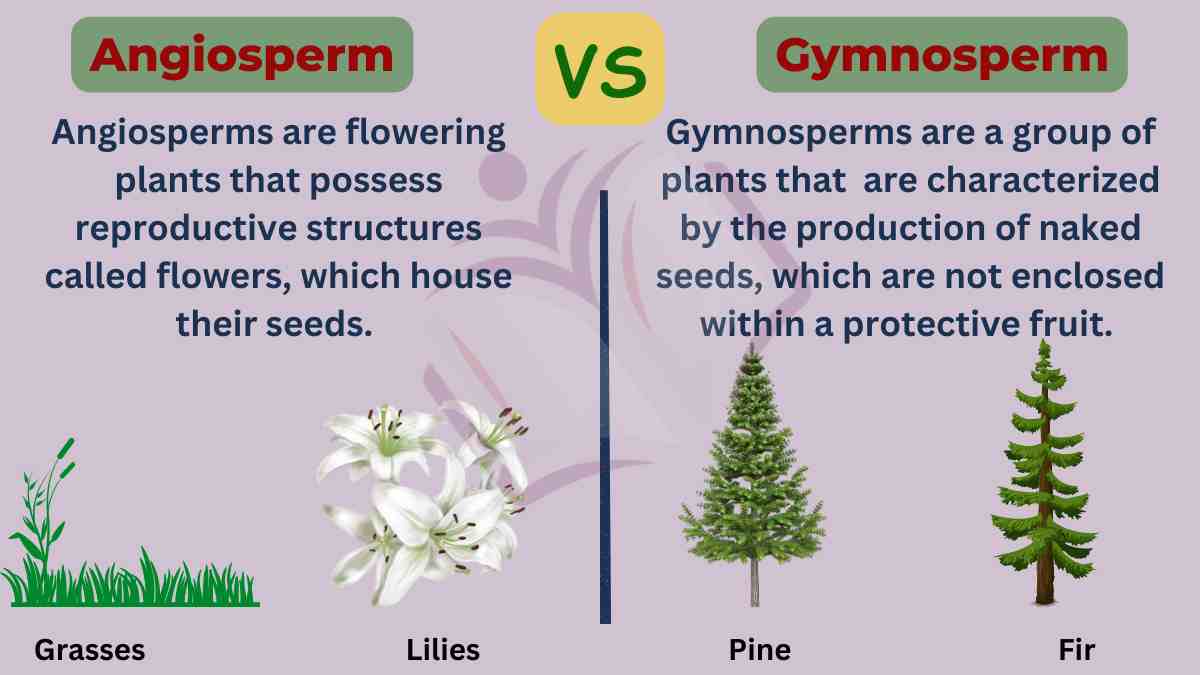The key difference between angiosperm and gymnosperm is that angiosperms produce flowers and enclosed seeds, while gymnosperms produce naked seeds.

In this article, we will discuss the difference between angiosperm and gymnosperm. We will also give deep insight into separately on both.
What is Angiosperm?
Angiosperms are flowering plants, the most diverse group of land plants. They possess reproductive structures called flowers, which house their seeds. The seeds are enclosed within a protective structure called a fruit, aiding in dispersal.
Angiosperms exhibit a wide range of forms and adaptations, from small herbs to tall trees, and they play a crucial role in ecosystems as primary producers and providers of food and resources for numerous organisms.
What is Gymnosperm?
Gymnosperms are a group of plants that include conifers, cycads, ginkgoes, and gnetophytes. They are characterized by the production of naked seeds, which are not enclosed within a protective fruit.
Gymnosperms typically have needle-like or scale-like leaves and are mostly woody plants. They are well-adapted to survive in diverse habitats and are often found in cold or arid environments.
Angiosperm vs Gymnosperm
The primary difference between angiosperm and gymnosperm is given below:
| Parameter | Angiosperms | Gymnosperms |
| Definition | Seed producing flowering plants with enclosed seeds. | Seed producing non-flowering plants with enclosed seeds |
| Reproductive Organs | Archegonia are absent. | Female gametophyte contains archegonia. |
| Life Cycle | Seasonal lifecycle with plants dying in autumn. | Evergreen in nature. |
| Embryo | Contains one or two cotyledons. | May contain one to several cotyledons. |
| Reproduction | Animals aid in reproduction for spread. | Wind aids in reproduction. |
| Tissue | It has triploid tissue. | It has haploid tissue. |
| Leaves | It consist of Flat-shaped leaves. | It should consist of Scale-like and needle-like leaves. |
| Wood | It contain hardwood. | It contain softwood. |
| Uses | Food, clothing, etc. | Paper, lumber, etc. |
